How To Evaluate Cost, Durability, Appearance, And More
A roof plays a vital role in protecting your home and keeping the interior comfortable throughout the year. It also affects the overall appearance of the exterior, enhancing the home’s curb appeal. Whether you are designing a new custom residence or updating your current home, selecting the right roofing material is an important decision. With many options available at different price points and durability levels, it’s essential to understand the factors that should influence your choice. Our guide outlines what to consider as you determine the best material for your home.

1. Cost Of Materials And Installation
Your roof is one of the largest investments you will make in your home, so start by understanding how the cost of materials and installation aligns with your overall budget. Prices vary widely between roofing products, and installation costs typically increase with materials that require specialized handling. The slope, height, and architectural complexity of your roof will also influence labor charges.
As a general rule, labor costs often mirror the cost of the material itself. Premium materials such as slate or natural clay not only carry a higher purchase price, but their significant weight may require structural reinforcement, further increasing installation expenses. At the opposite end of the spectrum, asphalt shingles are more affordable, easier to install, and lightweight. However, lower upfront cost may come with compromises in durability, so it is important to factor in the long-term value of each option.

2. Durability, Longevity, And Maintenance
How long you plan to live in your home should guide your approach to selecting a roofing material. If you expect to stay for many years, choosing a long-lasting option such as slate, tile, or metal can be a smart investment. These materials may have higher upfront costs, but they typically require little maintenance and can delay or even eliminate the need for another roof replacement. Products with shorter lifespans may be more affordable initially, but they often need repairs or replacement sooner, which increases long-term costs.
Climate is another key factor to consider. In regions prone to heavy storms, look for roofing that resists moisture and high winds. In hot, sunny areas, select materials that help improve your home’s energy efficiency by reflecting heat and lowering indoor temperatures. Every roofing product also carries a fire rating, so be sure to choose one with a strong rating if wildfires are a concern in your area.

3. Appearance
The roofing material you select should complement the architectural style of your home. A material that suits a Craftsman or Cottage-style residence may look out of place on a Contemporary design, so consider how color, texture, and overall character support the exterior aesthetic. The finish and profile of the material can also influence how the roof appears in different lighting conditions and from various viewing angles. Natural options such as wood, tile, and slate offer distinctive beauty, while high-quality synthetic products can provide a similar look with far less maintenance. Whatever you select, the goal is a cohesive exterior that enhances curb appeal and elevates the overall design of your home.

4. Structural Considerations
Every home is engineered to support a specific amount of weight. Heavier roofing products may require reinforcing the framing to ensure long-term stability, which can impact your budget and construction timeline. Slate and certain types of tiles are especially heavy, while metal and asphalt shingles are relatively lightweight.
Roof pitch and shape also influence which materials are appropriate. Some products perform best on steep, dramatic rooflines, while others are well suited to low or moderate slopes. Working closely with your builder and architect will help you understand the structural requirements before finalizing your selection and will ensure that your chosen material performs as intended.
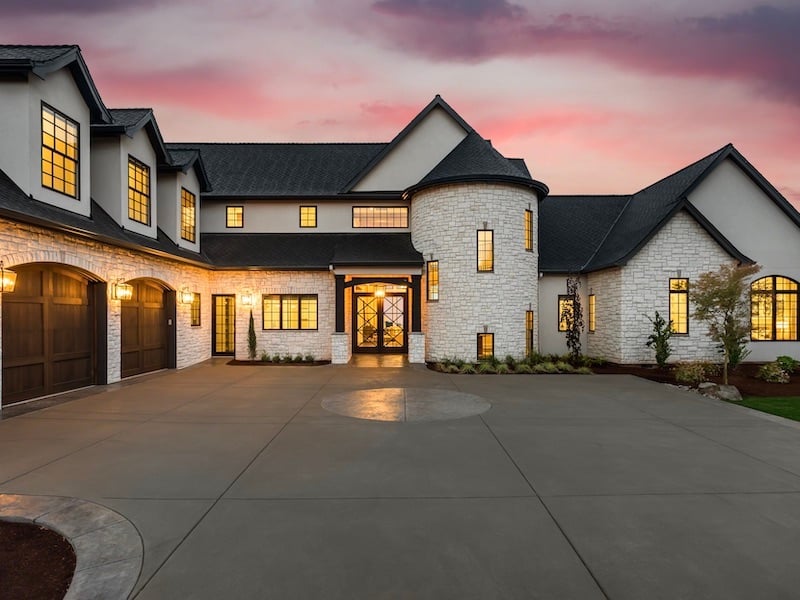
5. Types Of Materials
With many roofing products available, it’s helpful to understand the qualities, benefits, and limitations of each option before making a selection. Every material offers its own combination of cost, durability, maintenance requirements, and aesthetic appeal. The summaries below provide an overview of the most common choices to help you determine which one best aligns with your home’s design and your long-term goals.
Asphalt Composite Shingles
Asphalt composite shingles remain the most widely used roofing material because they are cost-effective, straightforward to install, and offered in a wide selection of colors and profiles. Homeowners can choose standard three-tab shingles for a clean, simple look or opt for thicker architectural shingles that provide added dimension and visual interest. Their moderate weight makes them compatible with many roof slopes without the need for additional structural support.
There are, however, trade-offs to consider. Asphalt shingles provide some fire resistance, but they do not match the longevity of more premium materials and may require earlier replacement as they can be susceptible to wind uplift and general weather-related wear over time. Since they are made from petroleum-based products, they are not the most sustainable roofing option, though certain recycling programs exist. For homeowners looking for an affordable roof with flexible design choices, asphalt shingles are a practical solution—provided their more limited lifespan and maintenance needs are taken into account.
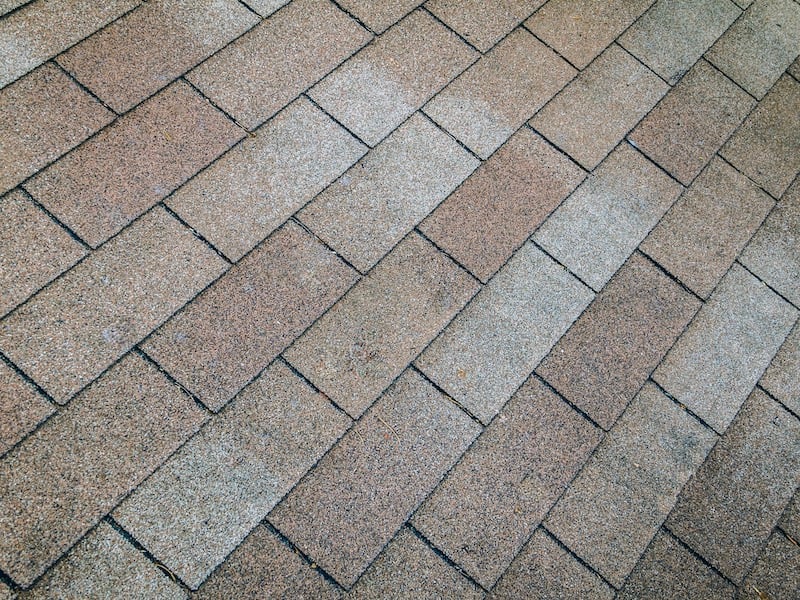
Wood Shingles and Shakes
Wood shingles and shakes offer a warm, natural appearance that adds charm and character to many architectural styles, particularly Craftsman, Cottage, and Cape Cod homes. Typically made from cedar, redwood, or southern pine, they develop a graceful silver-gray patina as they age. Shingles provide a smooth, uniform look, while shakes offer more texture and a rustic quality. Wood roofing is generally mid-priced and works well on moderate to steep slopes.
Despite their visual appeal, wood shingles and shakes come with important considerations. They require regular upkeep to prevent moisture damage, warping, and decay, and they are less durable than many other roofing materials. Wood provides good wind resistance but limited fire resistance, and some municipalities restrict its use even with protective treatments. For homeowners who value a natural aesthetic and are willing to commit to ongoing maintenance, wood can be an attractive option, but its long-term demands should be carefully weighed.

Slate
Slate is one of the most durable and visually striking roofing materials available. As a natural stone product, it offers timeless beauty and unique color variations that come from the specific quarry of origin. Slate performs exceptionally well in harsh weather, provides outstanding fire and wind resistance, and can last for many decades with minimal maintenance. Its refined appearance makes it a popular choice for Colonial, European, and French Chateau-style homes.
These advantages come with certain considerations. Slate is extremely heavy, so the roof structure must be reinforced to support its weight. The material itself is expensive, and installation requires highly skilled professionals, which adds to the overall cost. Repairs can also be more specialized than those for other roofing systems. For homeowners who want a long-lasting, premium roof and are prepared for the structural and financial investment, slate offers a level of beauty and performance that few materials can match.
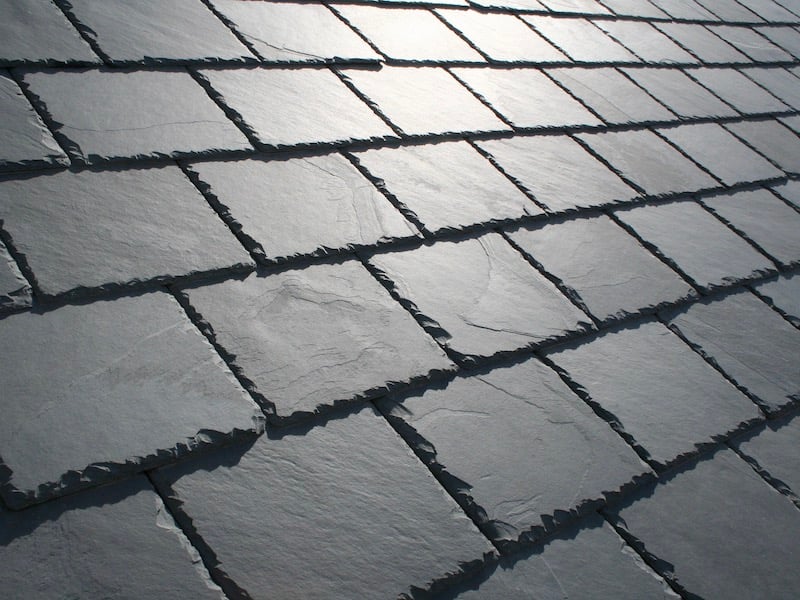
Concrete Tile
Concrete tile is valued for its versatility and its ability to replicate the appearance of slate, wood, or traditional clay, making it suitable for many architectural styles. It is long lasting, offers excellent fire resistance, and requires minimal routine maintenance. With a wide selection of shapes, profiles, and colors, concrete tile provides strong design flexibility while delivering consistent performance over time. When installed properly, it creates a durable roof with a sturdy, well-crafted look.
There are, however, important considerations. Concrete tile is significantly heavier than many other roofing materials, and most homes require structural reinforcement before installation, which can add to overall project costs. Although the tile is made from natural components, the manufacturing process involves high-temperature kilning and substantial energy use, making it less sustainable than some alternatives. Concrete tile also carries a higher price than basic roofing products, and proper installation must be done by experienced professionals to ensure longevity. For homeowners who appreciate its classic appearance and long-term performance, concrete tile can be an excellent option—as long as the required structural reinforcement and higher initial cost fit within the project budget.
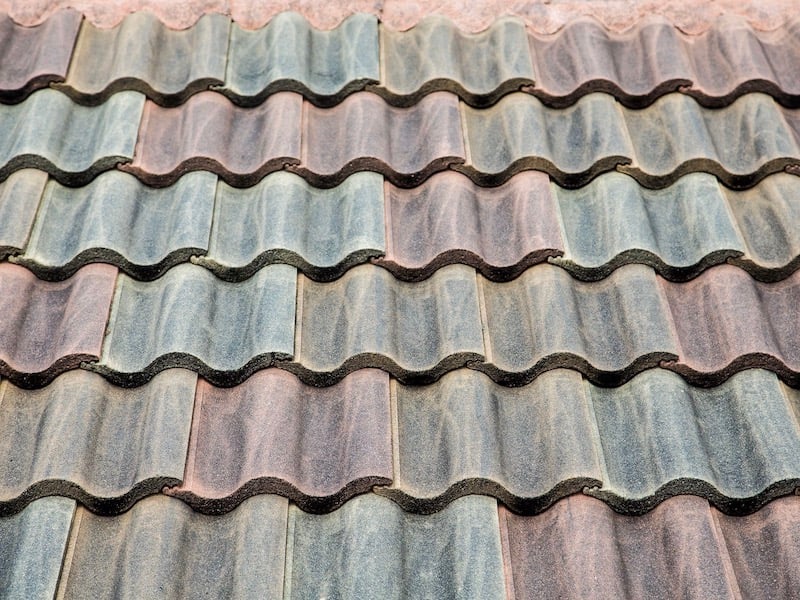
Natural Clay Tile
Natural clay tile is known for its warm, timeless look and is a hallmark of Mediterranean and Spanish-style architecture. Its rich color tones and classic profiles add distinctive character and strong visual appeal. Clay tile is exceptionally long lasting, offers excellent fire resistance, and requires very little routine maintenance. It performs well on moderate to steep slopes and gives the roof a refined, well-defined appearance.
However, clay tile does come with important considerations. Like concrete tile, it is heavy and typically requires a reinforced roof structure, which can increase overall project costs. It is also one of the more expensive roofing materials available. Although clay is a natural product, the kilning process requires significant energy, which affects its environmental impact. For homeowners who appreciate its classic aesthetic and are prepared for the structural needs and upfront investment, natural clay tile offers enduring style and reliable performance.
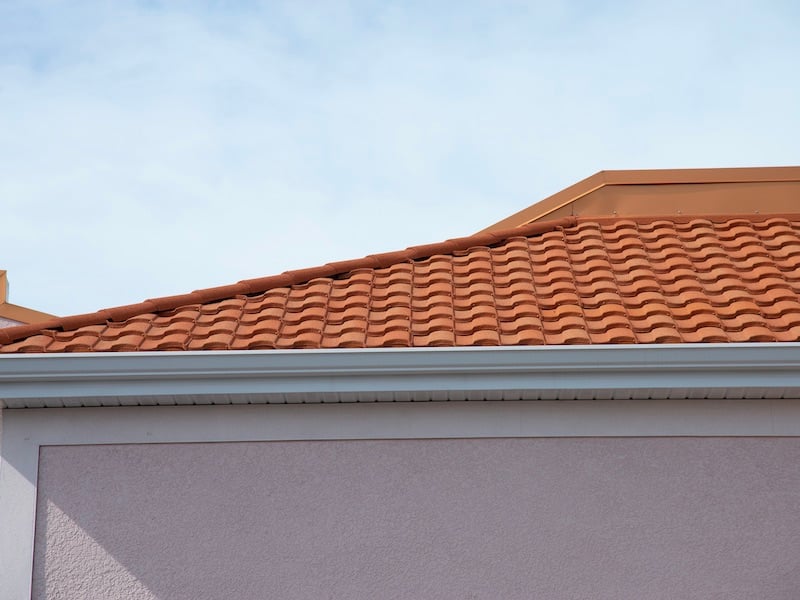
Metal
Metal roofing has become a popular choice for homeowners who want a sleek, contemporary look paired with reliable performance. Options range from aluminum and steel to premium metals like copper and zinc, available in both standing-seam panels and shingle-style profiles. Standing-seam systems offer clean, continuous lines, while metal shingles provide a more traditional, textured profile. Premium metals such as copper and zinc age gracefully, developing a patina that enhances their character. In contrast, aluminum and steel keep a more stable, unchanged appearance over the years. Metal roofs are lightweight, fire safe, and require minimal upkeep, and their reflective surfaces can help moderate temperatures inside the home. Many metal products also include recycled content, appealing to homeowners who prioritize environmentally conscious materials.
There are, however, important points to keep in mind. Metal roofing typically costs more upfront than asphalt shingles, and proper installation requires a skilled contractor. During strong storms, rain or hail may sound louder on a metal surface unless extra insulation is in place. Depending on the type and thickness of the metal, panels can also dent if struck by large hail or falling debris. For homeowners who value a refined appearance, limited maintenance needs, and strong energy performance, metal—whether a common alloy or a premium specialty option—can be an excellent fit as long as the higher initial expense aligns with the overall project plan.

Synthetic Materials
Synthetic roofing materials made from rubber, plastic, or polymer blends are designed to mimic the look of slate, wood, or tile while offering easier upkeep. They come in a wide range of colors and textures, making them suitable for many architectural styles. Because they are lightweight, they are typically simple to install and usually do not require structural reinforcement. Many synthetic products provide good fire resistance, and some incorporate recycled content, which can appeal to homeowners seeking a lower-maintenance and environmentally conscious option.
There are, however, important considerations. Quality and long-term performance can differ from one manufacturer to another, which means durability varies across product lines. While moderately priced, synthetic materials may not last as long as premium natural options, and some products can experience color fading or surface wear depending on the climate. For homeowners who want the appearance of a high-end material without extensive maintenance or added structural requirements, synthetic roofing can be a strong choice—as long as the specific product’s reputation and warranty are reviewed carefully.
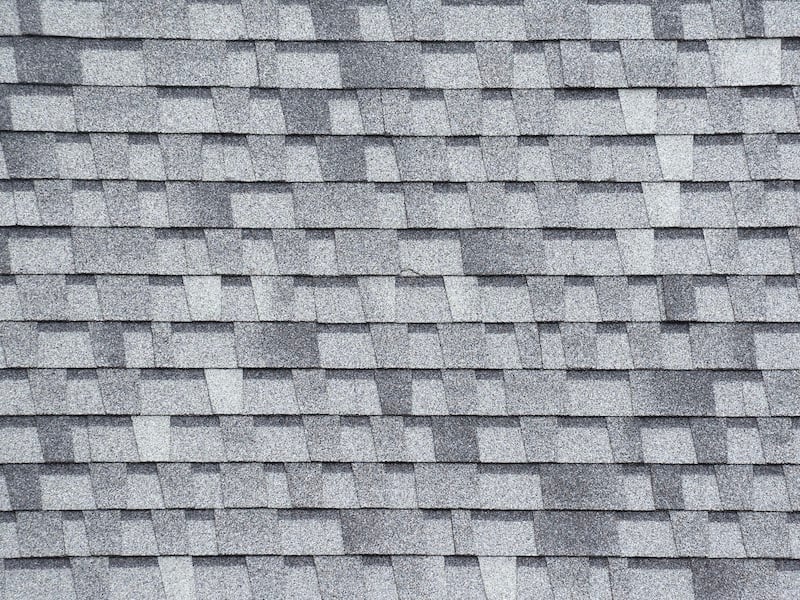
6. Warranties
Understanding the warranties that come with your roofing system is essential when making your final selection. Manufacturers typically offer warranties that cover defects in the roofing material, but the scope of coverage can vary widely. Review the details carefully so you know what is included, what may be excluded, and whether regular maintenance is required to keep the warranties valid.
In addition to the manufacturer’s coverage, your roofing contractor should provide a separate workmanship warranty that addresses installation-related issues. This added protection is important, as even the best materials will not perform well if they are not installed correctly. Choosing an experienced contractor with a strong reputation ensures that both types of warranties work together to safeguard your investment and provide long-term peace of mind.

At Meridian Homes, we specialize in luxury remodeling and custom home building in the Washington, DC area. Our mission is to create exceptional residences that exceed expectations. Our highly personalized design process and careful management of every project have earned us a reputation over many years for outstanding client service and solid, beautiful craftsmanship. Contact us today to begin your custom home or remodeling project.




